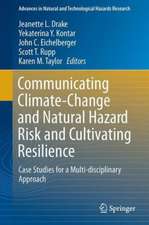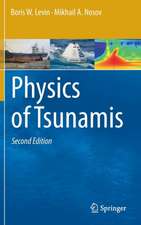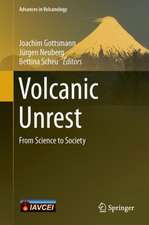Natural Hazards GIS-Based Spatial Modeling Using Data Mining Techniques: Advances in Natural and Technological Hazards Research, cartea 48
Editat de Hamid Reza Pourghasemi, Mauro Rossien Limba Engleză Hardback – 24 ian 2019
Din seria Advances in Natural and Technological Hazards Research
- 18%
 Preț: 977.97 lei
Preț: 977.97 lei - 18%
 Preț: 921.15 lei
Preț: 921.15 lei - 18%
 Preț: 1406.35 lei
Preț: 1406.35 lei - 15%
 Preț: 643.84 lei
Preț: 643.84 lei - 18%
 Preț: 955.56 lei
Preț: 955.56 lei - 18%
 Preț: 954.31 lei
Preț: 954.31 lei - 18%
 Preț: 958.56 lei
Preț: 958.56 lei - 18%
 Preț: 937.56 lei
Preț: 937.56 lei - 18%
 Preț: 952.72 lei
Preț: 952.72 lei -
 Preț: 382.18 lei
Preț: 382.18 lei - 15%
 Preț: 647.92 lei
Preț: 647.92 lei - 18%
 Preț: 948.47 lei
Preț: 948.47 lei - 15%
 Preț: 640.06 lei
Preț: 640.06 lei -
 Preț: 407.01 lei
Preț: 407.01 lei - 15%
![Submarine Mass Movements and Their Consequences [With CDROM]](https://i4.books-express.ro/bs/9781402012440/submarine-mass-movements-and-their-consequences-with-cdrom.jpg) Preț: 604.37 lei
Preț: 604.37 lei - 15%
 Preț: 643.48 lei
Preț: 643.48 lei - 15%
 Preț: 648.05 lei
Preț: 648.05 lei - 18%
 Preț: 1236.99 lei
Preț: 1236.99 lei - 18%
 Preț: 947.35 lei
Preț: 947.35 lei - 18%
 Preț: 947.35 lei
Preț: 947.35 lei - 18%
 Preț: 966.15 lei
Preț: 966.15 lei - 15%
 Preț: 642.51 lei
Preț: 642.51 lei - 18%
 Preț: 951.29 lei
Preț: 951.29 lei - 18%
 Preț: 1255.16 lei
Preț: 1255.16 lei - 15%
 Preț: 642.51 lei
Preț: 642.51 lei - 15%
 Preț: 646.43 lei
Preț: 646.43 lei - 15%
 Preț: 635.96 lei
Preț: 635.96 lei - 18%
 Preț: 1244.08 lei
Preț: 1244.08 lei
Preț: 788.72 lei
Preț vechi: 961.85 lei
-18% Nou
Puncte Express: 1183
Preț estimativ în valută:
150.94€ • 156.63$ • 126.16£
150.94€ • 156.63$ • 126.16£
Carte disponibilă
Livrare economică 22 februarie-08 martie
Preluare comenzi: 021 569.72.76
Specificații
ISBN-13: 9783319733821
ISBN-10: 3319733826
Pagini: 240
Ilustrații: XXII, 296 p. 146 illus., 131 illus. in color.
Dimensiuni: 155 x 235 mm
Greutate: 0.64 kg
Ediția:1st ed. 2019
Editura: Springer International Publishing
Colecția Springer
Seria Advances in Natural and Technological Hazards Research
Locul publicării:Cham, Switzerland
ISBN-10: 3319733826
Pagini: 240
Ilustrații: XXII, 296 p. 146 illus., 131 illus. in color.
Dimensiuni: 155 x 235 mm
Greutate: 0.64 kg
Ediția:1st ed. 2019
Editura: Springer International Publishing
Colecția Springer
Seria Advances in Natural and Technological Hazards Research
Locul publicării:Cham, Switzerland
Cuprins
Gully erosion modeling using GIS-based data mining techniques in Northern Iran; a comparison between boosted regression tree and multivariate adaptive regression spline.- Concepts for Improving Machine Learning Based Landslide Assessment.- Multi-hazard assessment modeling using multi-criteria analysis and GIS: a case study.- Assessment of the contribution of geo-environmental factors to flood inundation in a semi-arid region of SW Iran: comparison of different advanced modeling approaches.- Land Subsidence modelling using data mining techniques. The case study of Western Thessaly, Greece.- Application of fuzzy analytical network process model for analyzing the gully erosion susceptibility.- Landslide susceptibility prediction maps: from blind-testing to uncertainty of class membership: a review of past and present developments.- Earthquake events modeling using multi-criteria decision analysis in Iran.- Prediction of Rainfall as One of the Main Variables in Several Natural Disasters.- Landslide Inventory, Sampling & Effect of Sampling Strategies on Landslide Susceptibility/Hazard Modelling at a Glance.- GIS-based landslide susceptibility evaluation using certainty factor and index of entropy ensembled with alternating decision tree models.- Evaluation of Sentinel-2 MSI and Pleiades 1B imagery in forest fire susceptibility assessment in temperate regions of Central and Eastern Europe. A case study of Romania.- Monitoring and Management of Land Subsidence induced by over-exploitation of groundwater.- A VEGETATED VARIATION MODEL FOR THE FLOODPLAIN OF LOWER MEKONG DELTA DERIVED FROM MULTI-TEMPORAL ERS-2 AND SENTINEL-1 DATA.
Notă biografică
Hamid Reza Pourghasemi is an Assistant Professor of Watershed Management Engineering in the College of Agriculture, Shiraz University, Iran. He has a BSc (2004) in watershed management engineering from the University of Gorgan, Iran, a MSc (2008) in watershed management engineering and a PhD degree (2014) in watershed management engineering from Tarbiat Modares University, Iran. His main research interests are GIS-based spatial modelling using machine learning/data mining techniques in different fields such as landslide susceptibility and hazard, flood, gully erosion, forest fire, and groundwater. Also, Hamid Reza works on multi-criteria decision-making methods in natural resources and environment. He has published more than 70 research papers in different international journals (h-index 17).
Mauro Rossi is a Research Scientist from the “Consiglio Nazionale delle Ricerche” (CNR) in Roma, Italy. He is pursuing his research at the “Istituto di Ricerca per laProtezione Idrogeologica” (IRPI) in Perugia, Italy. He has diversified research interests mainly focused on mapping, modelling and forecasting of landslides, floods and erosion processes in different geo-environmental and anthropic contexts. Mauro Rossi has developed (i) new methodologies for statistical and deterministic analysis of the susceptibility and hazard posed by different geo-hydrological phenomena and for the estimation of their impacts, (ii) new approaches to the definition of rainfall thresholds for triggering Landslides, (iii) early warning systems, (iv) approaches to the design optimal models for estimating landslide susceptibility and for the assessment of social risk posed by landslides and floods. He has also developed specific software for the landslide susceptibility modelling, for the landslide magnitude modelling and for the joint modelling of landslides and erosion processes in relation to different scenarios of geomorphological, climatic, vegetation and anthropic changes, in order to adequately characterize the hill slopes and the hydrological basins dynamics. He has published more than 150 research papers in many international journals (h-index 31).
Mauro Rossi is a Research Scientist from the “Consiglio Nazionale delle Ricerche” (CNR) in Roma, Italy. He is pursuing his research at the “Istituto di Ricerca per laProtezione Idrogeologica” (IRPI) in Perugia, Italy. He has diversified research interests mainly focused on mapping, modelling and forecasting of landslides, floods and erosion processes in different geo-environmental and anthropic contexts. Mauro Rossi has developed (i) new methodologies for statistical and deterministic analysis of the susceptibility and hazard posed by different geo-hydrological phenomena and for the estimation of their impacts, (ii) new approaches to the definition of rainfall thresholds for triggering Landslides, (iii) early warning systems, (iv) approaches to the design optimal models for estimating landslide susceptibility and for the assessment of social risk posed by landslides and floods. He has also developed specific software for the landslide susceptibility modelling, for the landslide magnitude modelling and for the joint modelling of landslides and erosion processes in relation to different scenarios of geomorphological, climatic, vegetation and anthropic changes, in order to adequately characterize the hill slopes and the hydrological basins dynamics. He has published more than 150 research papers in many international journals (h-index 31).
Textul de pe ultima copertă
This edited volume assesses capabilities of data mining algorithms for spatial modeling of natural hazards in different countries based on a collection of essays written by experts in the field. The book is organized on different hazards including landslides, flood, forest fire, land subsidence, earthquake, and gully erosion. Chapters were peer-reviewed by recognized scholars in the field of natural hazards research. Each chapter provides an overview on the topic, methods applied, and discusses examples used. The concepts and methods are explained at a level that allows undergraduates to understand and other readers learn through examples. This edited volume is shaped and structured to provide the reader with a comprehensive overview of all covered topics. It serves as a reference for researchers from different fields including land surveying, remote sensing, cartography, GIS, geophysics, geology, natural resources, and geography. It also serves as a guide for researchers, students, organizations, and decision makers active in land use planning and hazard management.
Caracteristici
Offers useful studies on geo-spatial modelling for optimal land use management and planning Discusses with concrete examples the use of data mining algorithms for spatial modeling of natural hazards in different countries Offers high accuracy solutions for natural disasters susceptibility, hazard, and risk assessment Is a reference in spatial sciences, a new discipline increasingly integrated in universities study plans





























